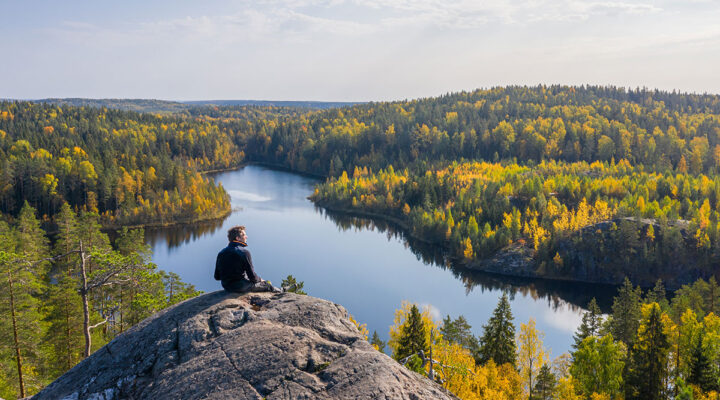What You Can Learn from the Happiest Places in the World

It’s been 10 years since the World Happiness Report was first published and, a decade later — despite the very best efforts of the COVID-19 pandemic and numerous geopolitical struggles — there’s still plenty of reasons to celebrate, wherever you are in the world. In fact, at the time of writing, worldwide benevolence is 25% higher than it was pre-pandemic.
“More and more people have come to believe that our success as countries should be judged by the happiness of our people,” the introduction to the report explains, which draws upon survey data from the population of over 150 countries. “There is also a growing consensus about how happiness should be measured,” it continues, also citing that global happiness, on the whole, has been “remarkably resilient,” despite numerous setbacks since 2020.
As the report highlights, it’s a good time to be living in the northern hemisphere and, more specifically, in Scandinavia, with Denmark, Sweden and Norway scoring highly on the report, based on elements including social support, generosity, life expectancy and corruption levels. Thankfully, if your chosen place of residence hasn’t ranked highly on the list — or at all — there are lessons you can learn from each.

Finland
For a sixth consecutive year, Finland was named by the World Happiness Report as the world’s happiest country. Despite its long, cold and dark winters, Finland continued to uptick on elements including generosity, income and life expectancy. With 75% of the country’s surface covered with forests and hosting the world’s largest archipelago, Finland is celebrated as a remarkably kind country, whereby “11 out of 12 lost wallets are returned to their owners,” its tourism site happily confirms.
Try this: Finnish people enjoy spending plenty of time outdoors, so why not try it yourself? By spending just five minutes outdoors, you’ll feel your heart rate slow down and your muscles relax as you take in your surroundings.

Denmark
Over 1000 kilometres away, Denmark retains its ranking as the second-happiest country on earth. Despite having higher tax rates (including a 25% value-added tax on most items, and a tax of up to 150 % on new cars), Denmark’s extensive and high-quality public services, levels of equality and social welfare help the 5.8m Danes keep their levels of cheer at a global high. No surprise, then, when healthcare in Denmark is provided without cost and, remarkably, university students pay no tuition fees and also receive a grant for expenses while studying.
Try this: In Denmark, trust and respect are essential values in society and honesty is expected of everyone. To that end, follow the advice of the journal Emotion, which published that people who wrote one thank-you letter were happier than those who didn’t, and express your gratitude to those around you.

Iceland
It’s good to be Icelandic — scoring highly on life expectancy and with plenty of natural beauty in which to take part in outdoor recreation and fitness, Iceland got the bronze medal in the happiness report. For both men and women, career paths can be on an equal footing — here, it’s illegal to pay men and women differently for the same job. What’s more, the pay for maternity leave is awarded to parents as a whole, to be shared between mother and father.
Try this: With a country-wide love of literature, storytelling is endemic to Icelandic culture and dates back to the country’s early settlers. In fact, the capital of Reykjavik was named a UNESCO City of Literature. As research from Yale confirms, reading can also lower your stress hormones, as well as making you happier, which helps you sleep better and reduces your blood pressure. Put down the smartphone and pick up a book.

The Netherlands
Lauded for its ability to deliver highly on life satisfaction and raising public money, life in the Netherlands ranks two points higher than other weaker countries. Inclusiveness, too, and work-life balance ranks highly, especially amongst its younger population. “In report after report, the Netherlands tops OECD countries for high life satisfaction among its young people. It contrasts starkly with the picture in countries like Britain, where depression and anxiety are on the rise among teenagers, and the US,” writes Amsterdam writer Senay Boztas in The Guardian, who interviewed Dr Simone de Roos, a researcher at the Netherlands Institute for Social Research (SCP). “They have a supportive environment at home, with friends and also at school. Dutch parents give a lot of support and have mild control,” says de Roos. “There’s an egalitarian climate, teachers are not authoritarian but accept the feelings of pupils, and pupils trust teachers.”
Try this: Do nothing. Known as niksen, the stress-busting practice of doing nothing is commonplace in the Netherlands. This isn’t time spent doomscrolling on the sofa, though: think more along the lines of letting your mind wander or people-watching with a coffee.


















